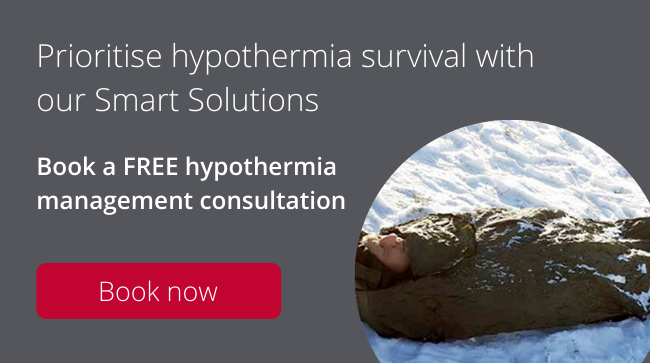
26/06/2023
Is all hypothermia the same?
Hypothermia is generally understood to be a medical condition in which the body loses heat and is usually associated with patients who are exposed to low temperatures in wintry weather. While cold-induced hypothermia is the most widely recognised form of the condition, it is essential to understand that not all types of hypothermia are the same, as this can impact the choice of hypothermia treatment and the survival chances of the patient.
In this article, we'll explain the differences between the various types of hypothermia – cold-induced and trauma-induced hypothermia – and the implications in terms of treatment.
Cold-induced hypothermia
Cold-induced hypothermia occurs when the body's core temperature drops below the normal range of 36.5-37.5°C. A dangerous fall in the body’s temperature can happen due to prolonged exposure to cold environments or immersion in cold water. As the body's temperature decreases, it experiences a series of physiological responses.
Initially, individuals may experience shivering, confusion and lethargy as the body attempts to generate heat. If left untreated, these symptoms can become more severe: symptoms may include loss of co-ordination, slurred speech and unconsciousness. Ultimately, severe hypothermia can lead to coma and death in as little as one hour.
Trauma-induced hypothermia
Trauma-induced hypothermia is an often-overlooked form of hypothermia that can develop as a result of severe injuries, particularly if there is a significant loss of blood.
When the body loses blood rapidly, its ability to generate and maintain heat is severely impaired. This can cause the body temperature to decrease again, which in turn further reduces the efficiency of blood clotting and increases blood loss. This vicious cycle, known as the Lethal Triad of Trauma, is invariably fatal if not quickly treated.
Why it’s vital to understand the differences
Understanding the differences between these two forms of hypothermia is crucial for timely diagnosis and effective treatment. While cold-induced hypothermia typically requires warming measures and insulation from the cold, trauma-induced hypothermia can only be treated by addressing the underlying injuries, controlling bleeding, and providing both passive and active warming.
Furthermore, trauma-induced hypothermia is often more challenging to detect as it can develop even in moderate temperatures – a hidden danger that highlights the importance of vigilant monitoring for at-risk individuals, such as severely injured casualties.
Find out more about our hypothermia treatment equipment
At TSG Associates, our Xtract™SR Heatsaver is a passive insulating solution that is designed for use in an austere environment to keep casualties warm and prevent rapid heat loss. It can be used to treat patients with cold-induced hypothermia or in combination with other treatments for those with severe trauma.
For more information, please send us a message today.












